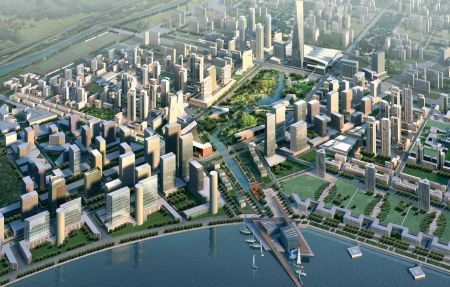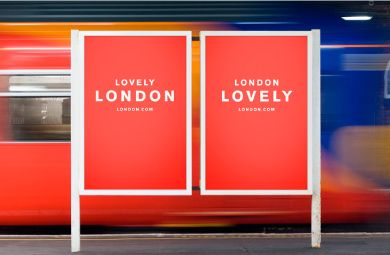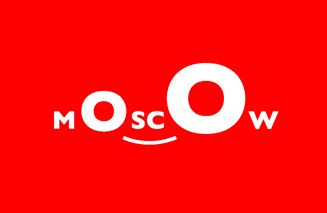![]()
You are welcome to share your thoughts on this article written by Kathy Oneto,Vice President, Brand Strategy at Anthem Worldwide, San Francisco
We live in a branded culture and see branding applied to all manner of people, places, and things. Here we focus on place: cities that are applying the basics of branding to accomplish their goals—whether that be to attract investment or human capital or to draw more tourists. From India and China to Russia and the UK, we see cities taking different approaches to brand development to improve each city’s overall “brand” image.
We found Lavasa, for example, a new urban planning project that will be the first city in India to be developed and governed entirely by a private corporation. The city has been built on the principles of New Urbanism, which include creating highly livable spaces, to “work, learn, and play in harmony with nature.” The long-term plan for Lavasa is ambitious:
…Lavasa will eventually house more than 300,000 people in five distinct “towns.” It will also have a world-class medical campus, luxury hotels, boarding schools, sports academies, a Nick Faldo–designed golf course, a space camp, and, its developers hope, animation and film studios, software-development companies, biotech labs, and law and architectural firms—in short, all of the knowledge industries at the heart of the “new India.”
Photo: Lavasa, India
Given the corporate governing structure of this city, it makes sense that its planners would approach the development much like a business project, starting with the brand. Partnering with U.S. branding firm Landor, they developed the brand idea of “Life in Full” which was designed to convey a complete experience, in harmony with nature. The name itself is designed to evoke feelings of fulfillment and freedom. In developing this highly optimistic and aspirational brand image for Lavasa, the city planners hope to attract residents, investors, and tourists alike who seek a better way of life with a focus on sustainability and peaceful co-existence.
Photo: Songdo, China
China provides similar examples of cities that are being built or rebuilt to attract investments from around the world and improve the overall experience in the city. For the 2010 World Exhibition in Shanghai, the government tore down and rebuilt large areas with the tagline “Better City, Better Life.” U.S. real estate development and investment firm Gale International is seeking to capitalize on this trend of urban improvement in China by marketing “cities in a box” to Chinese government officials. Literally turning a city into a product emphasizes the need to consider fundamental elements of branding as it relates to the city such as naming, creating a differentiated positioning, and the overall brand experience.
The first successful model of this type of city development is found in South Korea:
Songdo International Business District, [is] a $35 billion city being built from scratch on a man-made island off the coast of South Korea. At completion (currently scheduled for 2015), it will be roughly the size of downtown Boston, with 65,000 residents.
Songdo has successfully become a destination for multinational firms and expatriate employees. It will likely be a matter of time before we see these sorts of prototype communities spreading throughout China.
Similarly, in 2010 Russia made a splash when they announced to the world their ambitious plan to build a leading science and technology hub outside of Moscow (modeled off of Silicon Valley) known as the Skolkovo Innovation Centre. The goal of developing this new “Science City” is twofold: to attract the best human capital and to develop new technology and innovations to compete globally. In August 2010, the city planners announced MIR LLC and SPN Ogilvy Public Relations as the winners of the tender to develop the brand for the innovation centre. Given the importance of this initiative, it will be interesting to track how Skolkovo builds its brand image to effectively deliver on these goals.
Finally, London and Moscow have recently rebranded themselves in a more traditional sense, with designs of vibrant colors and taglines. In London, the mayor announced a public tender in August 2009 over which many prominent design firms competed. London’s main motivations for rebranding were a desire to disassociate itself with the financial turmoil of recent years, to prepare for the upcoming 2012 Olympics, and to “tidy up” their communications by unifying the messages from the disparate promotional organizations (i.e., Visit London, Think London, Study London, and Film London).
Photo: London’s new brand by Saffron Brand Consultants
Saffron Brand Consultants, led by industry guru Wally Ollins, won the business and recently relaunched the new London brand. The rebranding is a cheeky, vibrant execution with messaging that effectively captures the spirit of the city. According to Saffron’s website:
The brand expresses the quirky, understated, confident, self-deprecating style that anyone who knows London will recognise.
While not officially sanctioned by the government, architect Nicholas Pereslegina and designer Alexander Pershikova recently launched a rebrand for Moscow which appears to be an attempt to lighten up the city’s overall image while appealing to a younger crowd. The “Wow Moscow” branding incorporates emoticons to convey excitement and wonder, while giving a nod to the proliferation of texting and new language patterns that have emerged as a result. The tagline “Surprise + Smile” further conveys the positive energy and playful nature of the brand.
Photo: “Wow Moscow” branding
These examples from India, China, Russia and the UK all demonstrate the need to consider the “brand experience” in each city and show how municipal governments have used the city’s brand to help achieve their economic and social goals. Consider your own city and think about its personality, voice and overall look and feel. What does your city promise? Is it delivering on its promise? How does it use its image or brand to accomplish its goals? Marketers can learn from these examples and the cities’ savvy application of branding fundamentals to improve the overall “brand” image for residents, tourists, and investors alike.
About the Author
Kathy Oneto is an experienced brand marketer with over fifteen years of marketing and general business management experience. At Anthem, Kathy has led strategic engagements with clients such as Avery, Chevron, Diamond Foods, Peet’s Coffee & Tea, PetSmart, Safeway, and Seagate.




